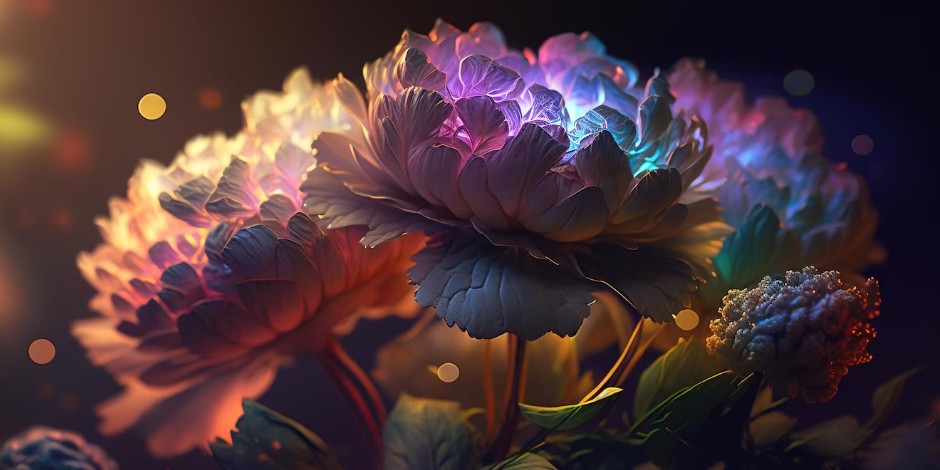Entering into the digital art world can be a thrilling and dynamic experience, as it offers a vast array of creative possibilities that were previously unavailable in traditional art forms. Here are some aspects of the digital art world that one might encounter:
- Endless creative options: With digital art, artists have access to a virtually limitless range of creative tools, including software programs, tablets, and other digital devices. This allows them to experiment with a wide variety of techniques and styles, from photo manipulation to 3D modelling and animation.
- Collaborative opportunities: The digital art world offers opportunities for collaboration with other artists and creators from around the world. Social media and online platforms provide a way to connect with other artists, share ideas and techniques, and build a community.
- Instant feedback: Digital art offers the ability to create and share work quickly and easily. Artists can post their work online and receive feedback from a global audience in real time, which can be a great source of inspiration and motivation.
- Technical challenges: While digital art offers a wide range of creative possibilities, it also presents its own unique technical challenges. Artists must be proficient in using digital tools and software, and they must also be aware of issues such as file formats, resolution, and color management.
Experience of Entering into the Digital Art World like

- The intersection of art and technology: Digital art blurs the lines between traditional art forms and technology, and offers new ways to explore and express creative ideas. It allows artists to experiment with new mediums and techniques, and to create work that is at the forefront of contemporary art.
- Accessibility: Digital art can be more accessible to a wider audience than traditional art forms, as it can be easily shared online and viewed on various devices. This can also make it easier for emerging artists to gain exposure and build a following.
- New business models: The digital art world has opened up new business models for artists, such as selling digital art files or offering limited edition prints. NFTs (non-fungible tokens) have also emerged as a new way to buy and sell digital art, creating a new market for artists and collectors.
- The role of technology: Digital art often involves using technology as a tool for creation, whether it be digital painting software, 3D modeling tools, or virtual reality. This opens up new possibilities for artists to explore and experiment with the intersection of art and technology.
- Preservation: Unlike traditional art forms, digital art can be at risk of being lost or becoming obsolete over time due to changes in technology or file formats. This has led to discussions about the importance of preserving digital art for future generations.
- Ethical considerations: As digital art becomes more prevalent, ethical considerations have emerged around issues such as copyright, ownership, and authenticity. These discussions are ongoing and highlight the need for new frameworks and guidelines to ensure that digital art is properly valued and protected.
Overall, the digital art world offers a dynamic and constantly evolving landscape for artists and creatives to explore. With new technologies and platforms emerging all the time, the possibilities for digital art are seemingly endless.
The Role of Color in Design

The Role of Color in Design
Color plays a vital role in design, as it has the power to evoke emotions, convey meaning, and communicate ideas. Here are some aspects of the role of color in design:
- Brand identity: Color is an essential component of brand identity, as it helps to create a recognizable and memorable image for a company or product. For example, the red and yellow of the McDonald’s logo is instantly recognizable and associated with the brand.
- Emotional impact: Color can have a significant emotional impact on viewers, evoking feelings of happiness, sadness, excitement, or calmness. This can be used to create a particular mood or atmosphere in a design, whether it be a website, poster, or product packaging.
- Visual hierarchy: Color can be used to create a visual hierarchy in a design, drawing attention to certain elements or information. Bright, bold colors are often used for headlines or calls to action, while softer, more muted colors can be used for background or supporting elements.
- Meaning and symbolism: Different colors are associated with different meanings and symbols in various cultures and contexts. For example, red is often associated with love, passion, or danger, while green can represent growth, nature, or money.
- Accessibility: The use of color in design also has accessibility considerations. For example, individuals with color blindness may have difficulty distinguishing certain colors, so it’s important to ensure that designs are still effective when viewed in black and white or with alternative color schemes.
Overall, color is a powerful tool in design, and designers must consider how it can be used to effectively convey meaning, evoke emotion, and create a visually engaging experience for the viewer.
More Similar Articles of the Author
What is Color Psychology in Art and Design?
What is the start of Color Psychology?
How have Modern Ideas Evolved on the Impact of Color on us?
How is Social Media Influenced by Colors?
Analyzing the Use of Contrast and Chiaroscuro by the Old Masters
The Importance of Color in Abstract Expressionism
What is the Significance of Primary Colors in Pop Art?
What is the Relationship Between Impressionism and Pastels?
Viewing life in All Its Hues






 Content Writing
Content Writing Video Marketing
Video Marketing Graphic Design
Graphic Design Lead Magnet Creation
Lead Magnet Creation Content Marketing
Content Marketing